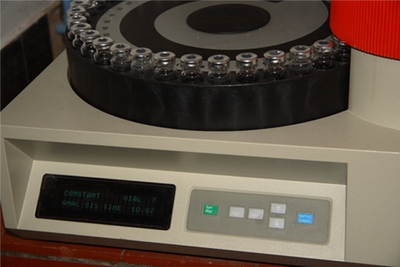Gas and Liquid Chromatography

Chromatography involves looking at the stationary and mobile phase of a particular element or compound. In gas and liquid chromatography, the mobile phase is a gas, usually an inert gas like helium, and the stationary phase is a liquid in a solid support. In gas and liquid chromatography, a small sample of a compound or mixture is injected into a machine called a chromatograph that contains the stationary and mobile phases. As the sample interacts with the liquid and gas, each compound it contains elutes, or emerges, at a different time. This is referred to as retention time. Chemists can compare retention times to known compounds or elements to analyze the mixture using this process.
The Chromatograph
The main component of the gas and liquid chromatograph is a tube, called the column. The sample being tested is sent into the column in a gas stream (the mobile phase). The gas and sample are made to pass through the filling of the column (the stationary phase). Each various compound or element in the mixture will pass through the stationary phase at a different time. As it exits the column, the machine will detect the compound and record it. Eventually all of the various components of the mixture will pass through and be identified.
In some machines, the stationary phase is not a filling, but rather is a coating on the wall of the column. The process is still the same, as the coating inhibits the progress of the particular compounds in the mixture, and thus they exit the column at different retention times.
Uses of Gas and Liquid Chromatography
Gas and liquid chromatography has several uses in the chemistry lab. One is to determine the various components of a compound or mixture. Another is to prepare pure compounds from an impure mixture. The procedure can also be used to test the purity of a substance.